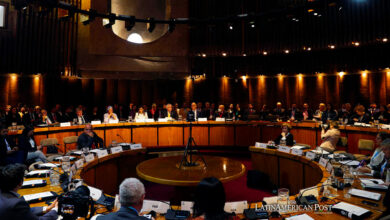Latin America’s return to school: How would it be?
The pandemic generated a change in education, which now is virtual. However, how can the transition to going back to school be applied?

The pandemic has caused students to be unable to return to the classroom and adapt to virtual education. / Photo: Unsplash
LatinAmerican Post | Ariel Cipolla
Listen to this article
Leer en español: ¿Cómo podría ser el regreso a las aulas en América Latina?
Virtual education is already with us. Although new teaching modalities are implemented, some have a negative view of events. For example, the website of the Voice of Argentina asks if "the school year is lost" due to the coronavirus, since, although the contents could be recovered, classroom activity is irreplaceable.
Although, for the moment, according to the El Litoral newspaper, the schools will continue to be closed and they will continue with virtual classes, we can still ask ourselves how to implement an orderly return to classrooms. That is, knowing that health care is essential, but also a correct transition to formal education. Let's see how it could happen.
How could the return to face-to-face classes be carried out and what is the way to optimize the virtual ones?
First, while the region does not know when it will be possible to return to classroom activities, there are certain programs to ensure that it is done safely. For example, the Ámbito newspaper highlights that, in Argentina, the national protocol for the return to classes was approved, with guidelines and general recommendations to guarantee a safe return when the health situation is convenient.
However, not all Latin America has the same situation. For example, we see that the Diario Concepción de Chile highlights that the possibility is being considered that classes will resume in August. Basically, the intention is to comply with different protocols based on decisions in the Health area.
It is clear that, for the moment, what is sought is to achieve an improvement in virtual activities, but also the possibility that, when they return to the classroom, boys and girls can avoid infections. This implies a restructuring of the education systems in schools, so we should consider whether there is any other country that has successfully gone through this same situation.
Also read: How is coronavirus affecting the structure of supply chains?
Within Latin America there is a model that is allowing this situation to occur earlier than expected. According to the Infobae media, Uruguay has a successful case, since it knew how to take advantage of distance education "with schools closed", through the program known as "Ceibal at home".
This program is an authentic State policy, which transcends the governments in power and makes it possible to shorten the material gap of access to the Internet by the students. That is, the delivery of notebooks and tablets for students implying that they can learn through the network, in addition to the different platforms and specialized software for teaching.
Although the Uruguayan educational system is one of the smallest (with 817 thousand students), 85% attend public schools. Unlike other models in the region, it was decided to use a single educational channel, so that both students and teachers have at hand the instructions to better adapt to this new system.
This situation means that there is no “rush” to return to the classroom, since, at the moment, virtual education seems to be successful in terms of quality. However, it is also necessary to think about the way in which a new teaching model can be applied in the establishment itself, which has all the prevention methods at hand.
In that case, we must move to France. As highlighted by the Télam media, President Macron decided the return of students and teachers "compulsory". All this will be done following strict sanitary norms, reducing the compulsory distance of schools from four meters to one, due to the improvement in the epidemiological situation.
Another possibility to implement will be the "bubble classrooms". According to the Cadena 3 media, it is the “new post-pandemic school model”, where the rooms will be limited to up to eight students, a reduction in class hours and hygiene protocols. All this will involve teaching on staff, so we are still in time, not only to improve a transition to the classroom, but also to perfect virtual education.




